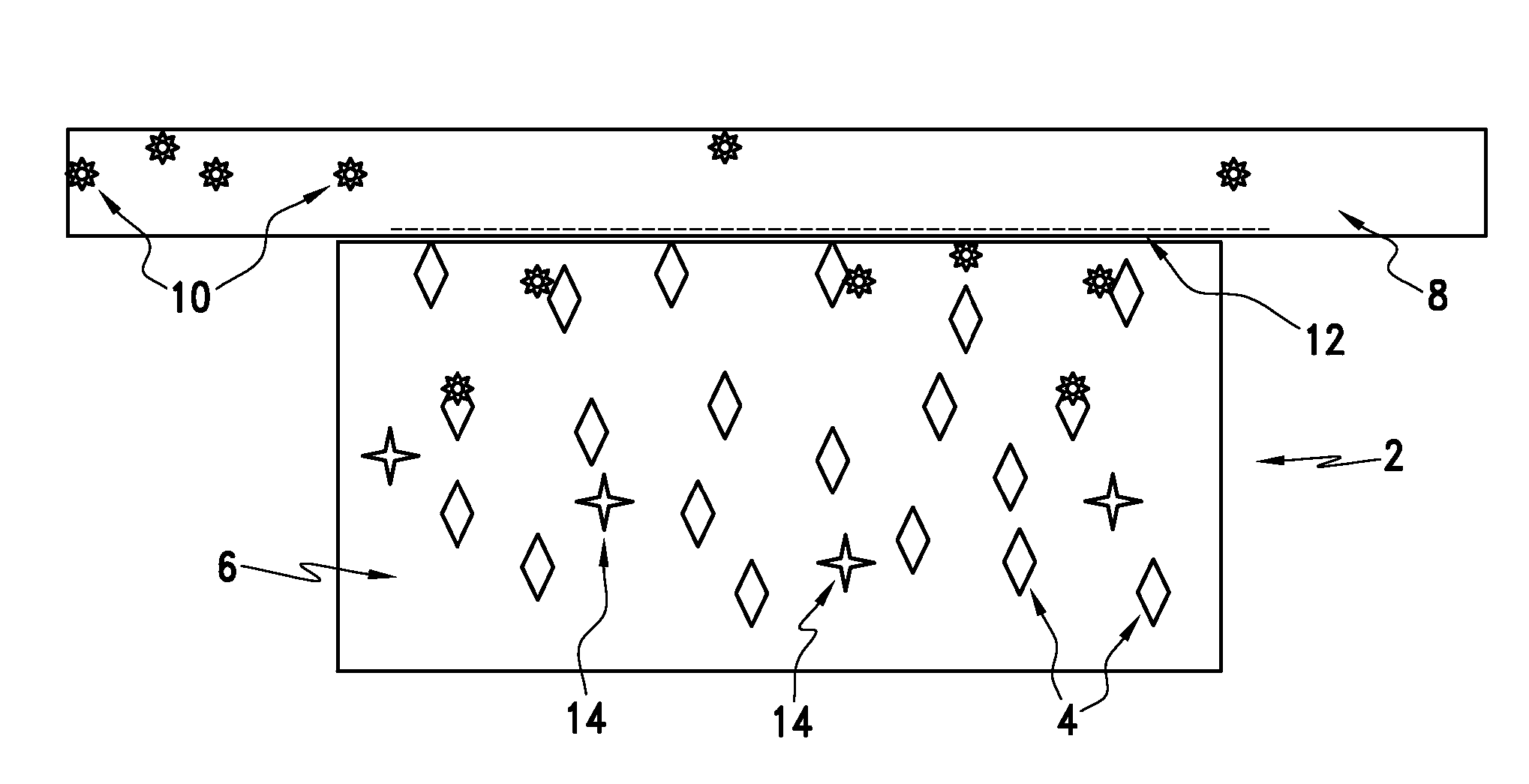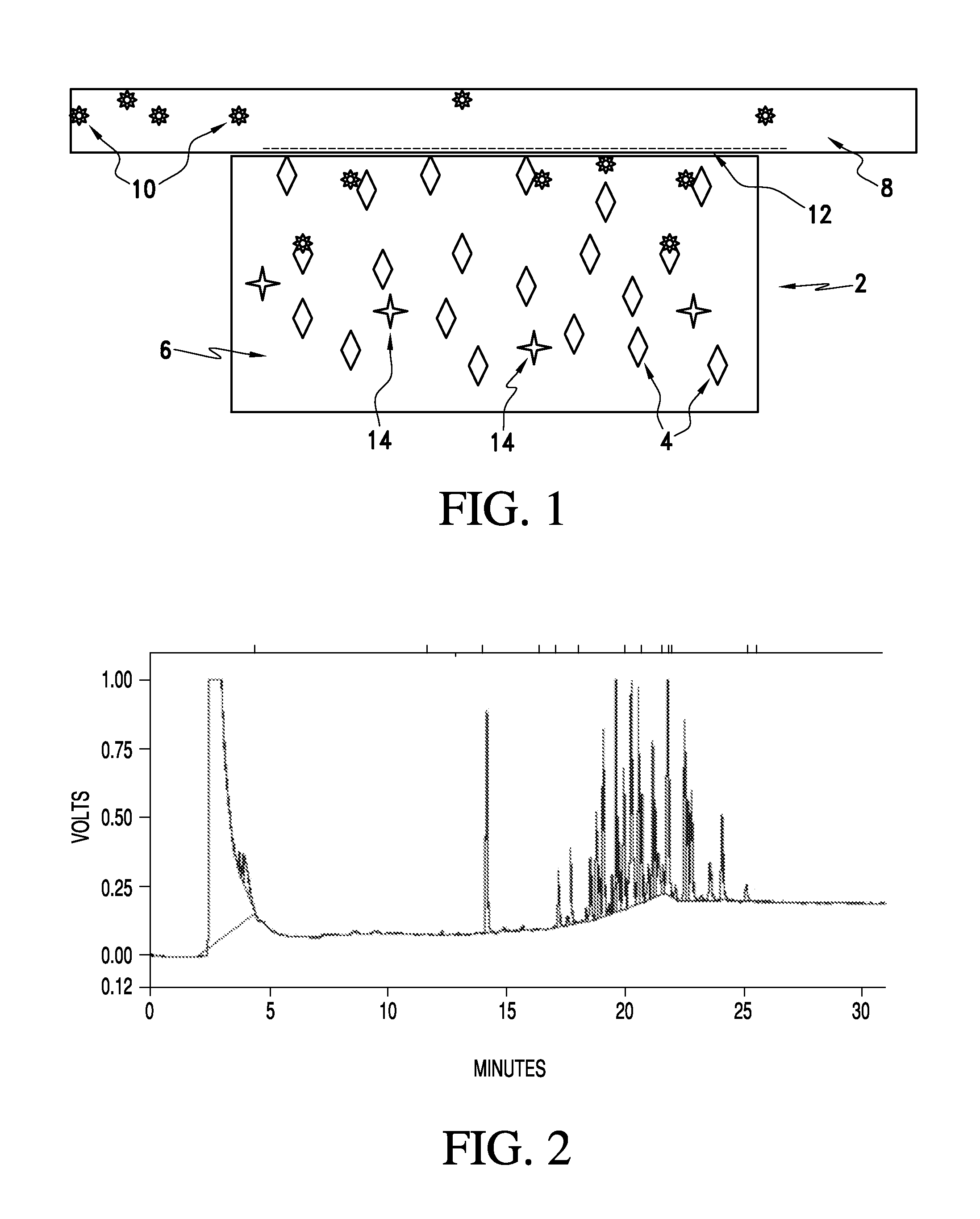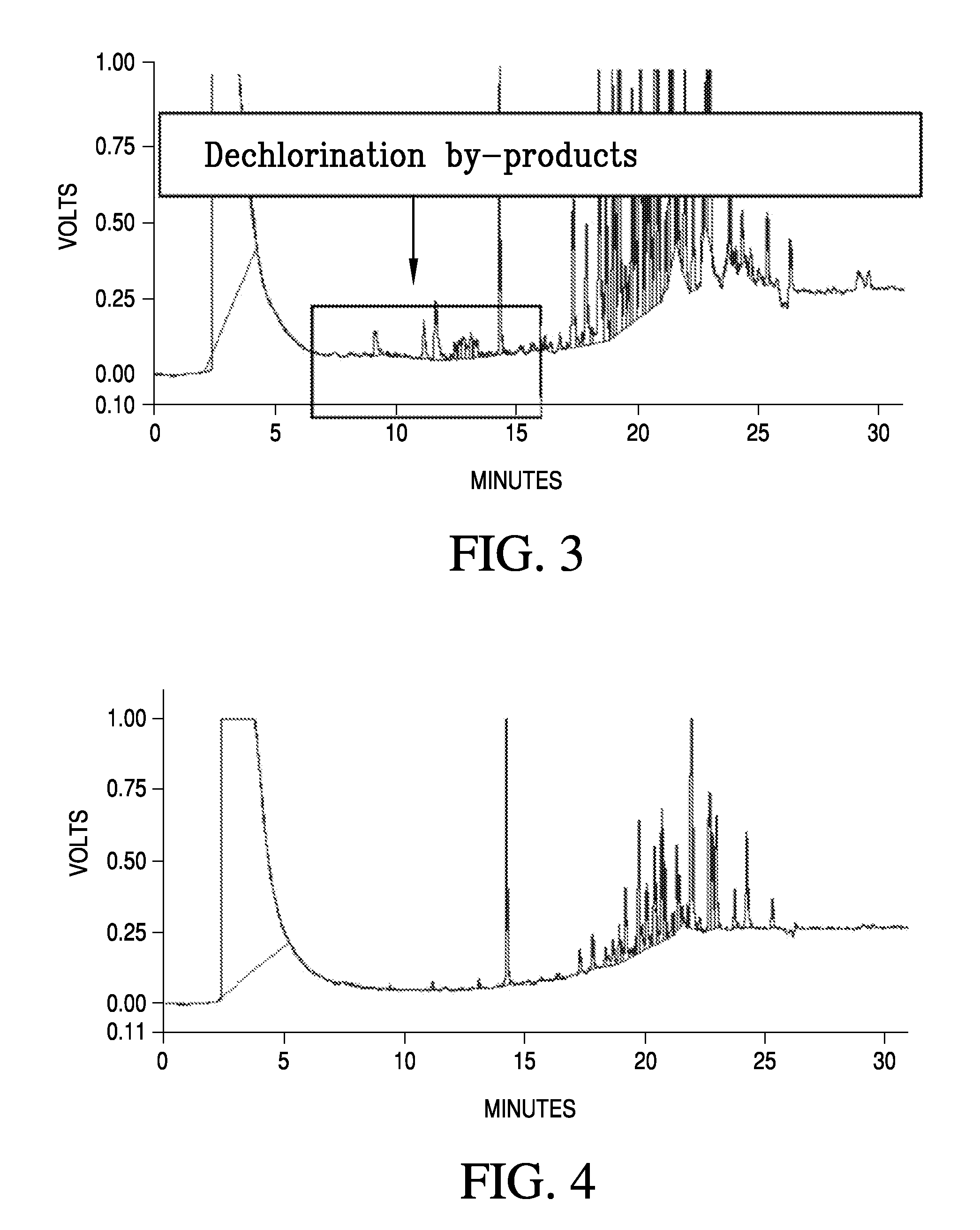Bimetallic Treatment System and its Application for Removal and Remediation of Polychlorinated Biphenyls (PCBs)
a technology of biphenyls and treatment systems, applied in the direction of transportation and packaging, contaminated groundwater/leachate treatment, mixing, etc., can solve the problems of hazardous demolition of structures and virtually unaltered structures, and achieve the effect of effectively removing and remediating pcbs and avoiding future liabilities
- Summary
- Abstract
- Description
- Claims
- Application Information
AI Technical Summary
Benefits of technology
Problems solved by technology
Method used
Image
Examples
first embodiment
[0038] In a first embodiment, the treatment system is applied to natural media. The treatment system causes the PCB to be extracted or removed from the media (e.g. soil or sediment), and degrades the chlorinated aromatics into biphenyl or other non-chlorinated benign by-products.
[0039] In a preferred embodiment of the present invention used in treating natural media, the treatment system comprises zero-valent magnesium (Mg) particles coated with a small amount of palladium (Pd) utilized in conjunction with an organic hydrogen donating solvent, preferably alcohols and water. The treatment system has two functions in remediating sediments: first, to adsorb the PCBs from the soil matrix; second, to degrade the extracted PCBs. The process for sorbing the PCB molecules from the inorganic or organic external soil or humic particles to the treatment system is aided by the incorporation of a lipophilic earth-friendly solvent, preferably ethanol, corn oil, or limonene, within the treatment s...
second embodiment
[0041] In a second embodiment, the treatment system is applied to ex-situ structures and causes the PCBs to disassociate from the coating, i.e., paint, and the chlorinated aromatics are degraded to biphenyl, the benign by-product. Once the treatment system is in contact with a contaminated structure, the paint softens allowing the PCBs to diffuse into the treatment system and undergo degradation. The PCBs continue to enter, diffuse, and degrade into non-halogenated end-products. FIG. 1 illustrates the manner by which a preferred embodiment of the present invention may be used to treat an ex-situ structure. The treatment system 2 including reactive bimetallic particles 4 in a solvent system 6 degrades a painted structure 8 containing PCBs 10. The treatment system 2 softens the paint at the contact area 12. The PCBs are disassociated from the painted structure 8 and non-chlorinated by-products 14 are contained within the treatment system. Additionally, a second solvent, such as d-limo...
PUM
| Property | Measurement | Unit |
|---|---|---|
| temperatures | aaaaa | aaaaa |
| diameter | aaaaa | aaaaa |
| diameter | aaaaa | aaaaa |
Abstract
Description
Claims
Application Information
 Login to View More
Login to View More - R&D Engineer
- R&D Manager
- IP Professional
- Industry Leading Data Capabilities
- Powerful AI technology
- Patent DNA Extraction
Browse by: Latest US Patents, China's latest patents, Technical Efficacy Thesaurus, Application Domain, Technology Topic, Popular Technical Reports.
© 2024 PatSnap. All rights reserved.Legal|Privacy policy|Modern Slavery Act Transparency Statement|Sitemap|About US| Contact US: help@patsnap.com










